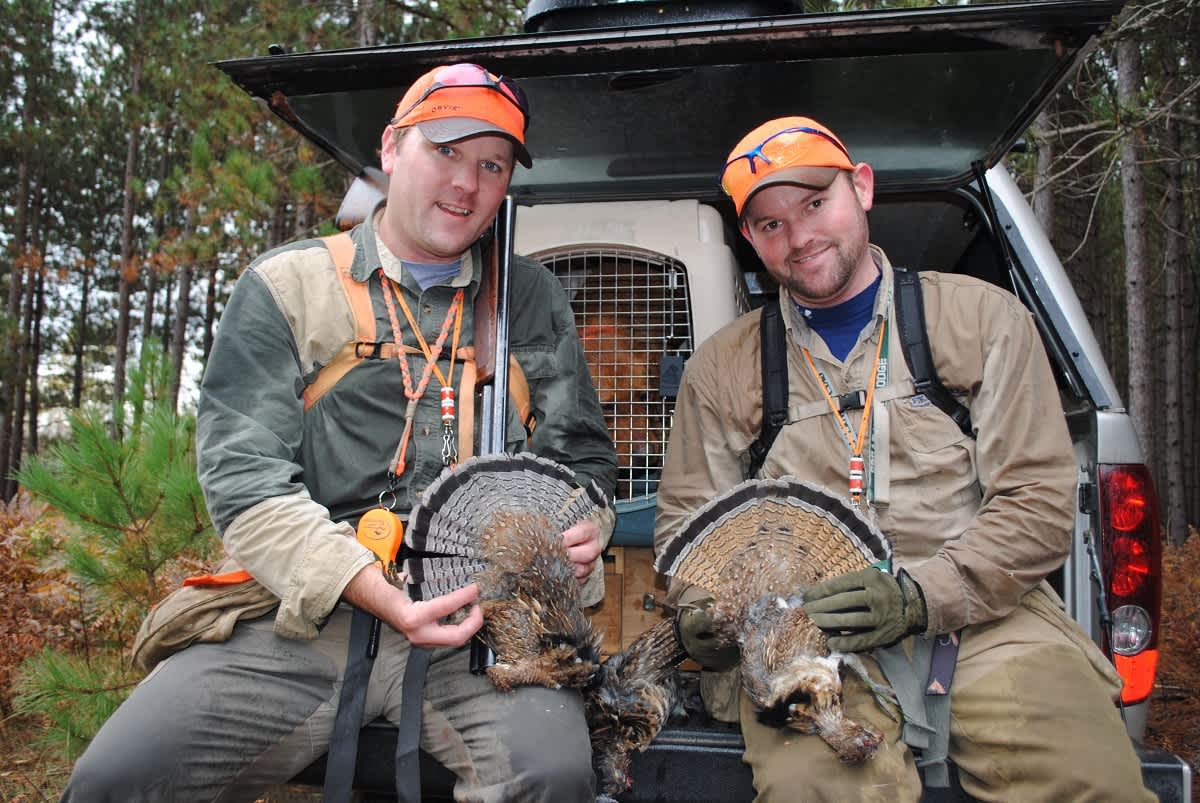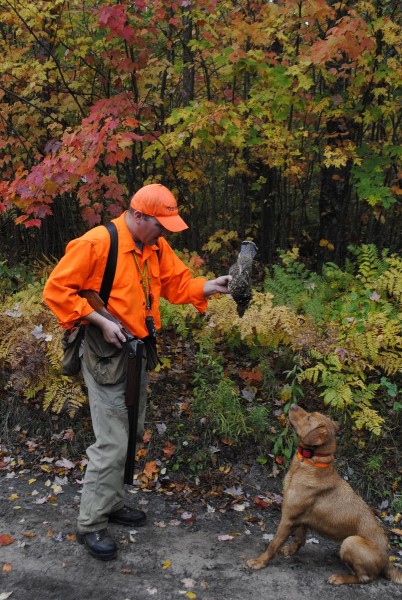Why Michigan is a Top State for Grouse Hunters
Bob Gwizdz 09.08.15

There is little doubt among American sportsmen that Michigan is one of the top ruffed grouse hunting states in America. The reason is simple: grouse hunting in Michigan is good. Very good.
Department of Natural Resources hunter surveys indicate just how good; in an era in which small-game hunting is generally in decline across the state, grouse hunter numbers are hanging in there. More hunters say they hunt ruffed grouse than any other small game species.
So what makes Michigan such a great grouse hunting environment? In a part of the country (the Upper Great Lakes region) that’s known for ruffed grouse, Michigan has one virtue that transcends most states: plentiful habitat. In order to hunt grouse, you have to have land, and Michigan hunters have more access to land than anywhere east of the Mississippi River—some 10 million-plus acres, to be specific.
There are more than four million acres of state forest land, close to three million acres of national forest land, and some 2.2 million acres of commercial forest land—privately owned property that is open to the public for hunting and fishing. Add in various other accessible lands—some public school-owned forests and some open park lands—and 10 million acres could be a conservative estimate.
Ruffed grouse aren’t everywhere, of course, but they thrive in early successional forest lands, which are maintained by aggressive timber harvest programs. Michigan is especially aggressive in that regard and becoming more so.
“I think the next 10 years will be better than the last 10 because I see a change in how we harvest timber,” said Fritz Heller, a well-known (and highly successful) Michigan grouse hunter. “We’re managing with more of a bent towards balancing the age classes of forests. Instead of seeing a 300-acre cut, they’re cutting five 30-acre blocks and then coming back 10 years later and cutting the other five blocks. That’s creating more edge habitat for the grouse and they thrive on the edge.
“We have had a lot of habitat that was a little too young or a little too old for prime grouse hunting,” he continued. “But over the next few years we’re going to have a lot of habitat coming into prime age-classes and the way we cut now, we’ll see a lot coming in the future.”
And that’s just state land. The national forests—which seemed to be too timid about cutting because of the public-relations aura surrounding “old growth forest” a couple of decades ago—is getting with the program, too.
“The feds are actually harvesting at a rate that I did not see a decade ago,” Heller said. “I never thought the Feds could get rid of the green tape to get it cut, but they have.”
But Heller points out that some natural geographic features of Michigan that make for good grouse habitat regardless of timber management policies.
“The amount of tributaries to the Great Lakes in Michigan creates a lot of non-traditional habitat without it being subject to the saw,” Heller said. “Take the western shore of Lake Michigan for an example—it has six to eight tributaries that support steelhead and salmon runs. Now look at the eastern shore of Lake Michigan—the Michigan shoreline—there are three to four times as many tributaries. We have water flowing everywhere in Michigan at a much higher rate than other upper Great Lakes states. Those stream corridors create habitat. They give us natural light openings, which produce alders, cedars, brushy shrubs—habitat zones that are not created by the saw like aspen—that support grouse and offer diversity the forest.”

The water courses provide moisture to the soils which pays off in outstanding mast production, everything from apples to acorns. Hunters who identify grouse hunting areas based on food supplies can have a hard time deciding where to hunt because wild fruit is so prevalent, especially during wet years (like this one).
“I wouldn’t necessarily recommend that hunters work along stream edges, but there are days we spend our entire day along water,” Heller said. “You can’t always get good shooting in there around the spruces and cedar and tamaracks because it’s such high-quality escape cover, but the birds are in there.”
But if there’s one over-riding characteristic of Michigan’s forests its aspen. Aspen flower buds are an important winter food for grouse—when most everything else is covered with snow—and Michigan boasts some 365,000 acres of aspen forest on state lands alone. Much of Michigan’s state forest land came into state ownership because of tax reversion; early settlers found they couldn’t farm the land successfully because of relatively poor soils. But those same poor soils grow aspen perfectly well.
If that’s not enough to get you started, the Department of Natural Resources has taken to developing areas it calls GEMS (Grouse Enhanced Management Sites) with walking trails through prime grouse habitat. Beginners can spend a couple of hours on a GEMS site and then be able to identify what sort of habitat they should be hunting. And there’s plenty of it.
For more information on Michigan grouse hunting visit www.michigan/wildlife.
For more information on Michigan hunting go to michigan.org. Click here to purchase a Michigan hunting license online.
This article was produced in partnership with Pure Michigan.

